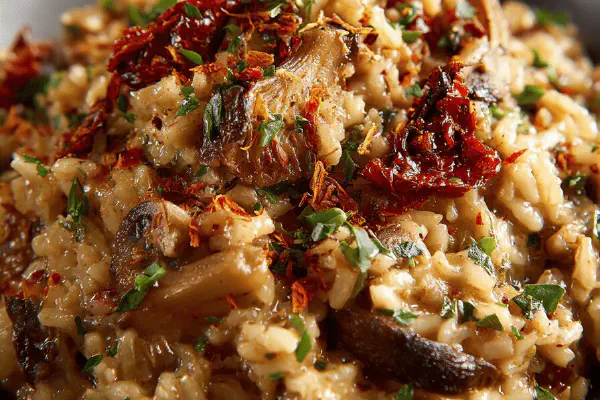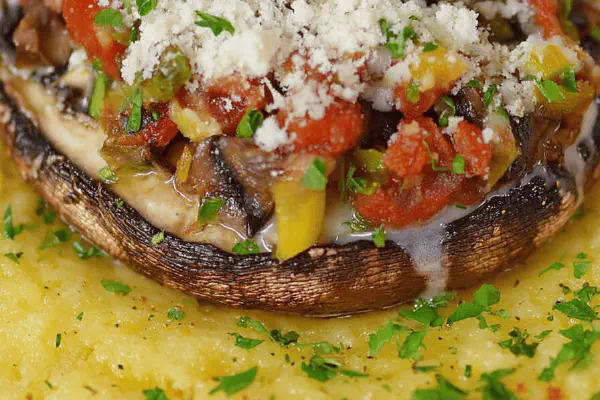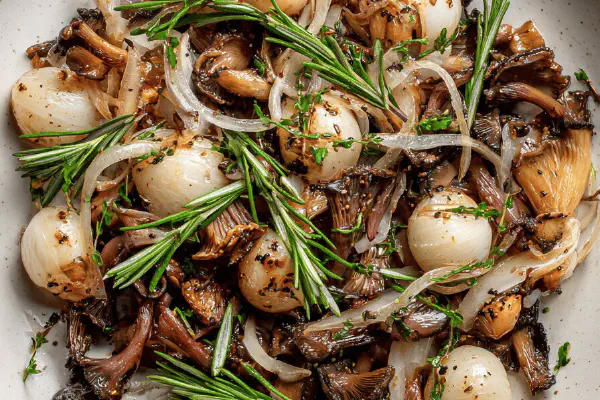Wild Mushroom Risotto Jar

By Emma
Certified Culinary Professional
Ingredients
- 400 g (1 3/4 cups) arborio rice
- 10 g (3/4 tbsp) wild mushroom powder
- 25 ml (1 1/2 tbsp) sun-dried tomatoes in olive oil, chopped
- 15 ml (1 tbsp) dried chives
- 15 ml (1 tbsp) dried onion flakes
- 2 ml (1/2 tsp) dried thyme
- 1 ml (1/4 tsp) smoked paprika
- 2 dried bay leaves
- Pinch celery salt optional
About the ingredients
Method
- Grab a clean 700 ml glass jar. Dump in arborio rice first, settles as a base.
- Sprinkle wild mushroom powder over rice, breaks dry compactness, releases aroma when cooking.
- Add chopped sun-dried tomatoes, oily bits cling to rice, important for flavor release during cooking.
- Layer dried chives and onion flakes evenly; these will rehydrate and meld into body of risotto.
- Dust thyme and smoked paprika on top. The paprika adds a subtle smoky earthiness, makes the flavor pop without overpowering.
- Nestle in 2 dried bay leaves. They steep during cooking, giving the broth a layered herbal backdrop.
- Add pinch of celery salt if you like a subtle salty herbal note but don’t overdo.
- Seal tight. Label with simple instructions: simmer rice with contents in 900 ml hot vegetable broth gently for 35–40 minutes, stirring occasionally.
- When edges start looking creamy and grains tender but still little bite, remove from heat.
- Discard bay leaves. Stir vigorously to thicken naturally; use untouched plant-based butter or olive oil for shine if desired.
Cooking tips
Chef's notes
- 💡 Layer dry ingredients in jar with rice at bottom. Powder mushroom on top breaks compactness, avoids clumps. Chopped oily sun-dried tomatoes add fat and flavor early when broth hits. Herbs scatter next to ensure even rehydration; thyme not oregano here, softer green notes. Bay leaves whole, but only two; more brings bitterness fast. Seal tight, label with stirring reminder. Heat slow, gentle simmer needed for starch to release properly. Stir not just for mixing but coax creaminess out of grains. Watch edges for creamy glow and rice translucency to judge doneness.
- 💡 Wild mushroom powder beats dried slices every time: no dusty note, aroma blossoms early. Slow simmer 35–40 mins is key. Stir often but gently, not too rough, or you risk mush. Smoked paprika tiny pinch, just whisper of smoke—too much smothers mushroom baseline. Thyme over oregano softer, works better in layered risotto flavors. Optional celery salt only if your broth is bland; otherwise salt clash or harshness. Prepare broth hot, 900 ml measured to jar size; too much broth means soggy mess. Stirring, aroma change, and grain translucency tell when to stop.
- 💡 If no wild mushroom powder, fine grind dried mushrooms in blender. Not rehydrated first or you lose dry layering advantage. Sun-dried tomatoes in oil essential—oily bits help tomato flavor carry through broth, do not skip or swap with dry. Fresh herbs won’t last long in jar, dried hold moisture better. When sealed, keep jar upright to avoid accidental mixing before use. Cook with stock of choice but veggie broth preferred for bright notes. Butter or olive oil finish adds shine and mouthfeel, skip if avoiding fats, but risotto loses silkiness then.
- 💡 Don’t rush jar simmer. Rapid boil shatters rice, leaves gooey mush. Slow heat lets starch release deep. Hands-on stirring draws creaminess naturally; skip it, you get dry or uneven cooked grains. Bay leaves removed at finish—if left too long, risotto gets bitter. Smoked paprika smell is your timer; when faint smoke aroma floats, almost done. Rice grains swell, translucency fades. Cream forming edges tell you it’s close. Use vegetable broth hot from kettle; cold broth shocks jar contents, slows cooking. Label instructions crucial; many dump dry jar mix straight to pot, ruins texture.
- 💡 If you get mush, reduce broth next time by 50 ml. Over stirring? Pull back on agitation. If flavor flat, check tomato oil quality—cheap olive oils dull fragrance. Thyme powder or flakes preferred for even infusion. Wild mushroom powder shelf stable but check freshness often or aroma fades. Celery salt can overwhelm if broth already salty, test before adding. Use jar size as gauge; 700 ml perfect for these quantities. Stirring frequency varies; early slow till breaks dry compactness, later your wrist fatigue signals finish. At final, vigorous stir pulls starch out, boosts creaminess, shine.
Common questions
Can I use dried sliced mushrooms instead of powder?
Yes, but expect dusty flavor and uneven hydration. You’d need to rehydrate first. Powder melts and blends better, gives consistent umami. Slices risk clumping or staying chewy inside jar. Fine grind if only slices, dry blending fine too.
What if I don’t have sun-dried tomatoes in olive oil?
Swap with dry sun-dried tomatoes but add a teaspoon olive oil separately. The oil releases fat-soluble flavor compounds faster while simmering. Without oily bits flavor dulls, texture dry. Use chopped tomatoes to mimic original texture. No oil means slower flavor.
Why does risotto turn mushy sometimes?
Usually too much broth or over stirring breaks grains. Slow simmer crucial. Stir gently, not constantly like a madman. Watch broth amount—too much soaking makes mush, too little undercooked. Patience helps here, starch release visible at creamy edges, not watery. Bay leaves left too long add bitterness confusing final texture.
How to store leftover risotto if any?
Cool fast then refrigerate up to 3 days. Can reheat with splash broth or water to revive creaminess, stir gently. Freeze in airtight container only if no bay leaves leftover—leaves turn harsh on reheating. Jar storage only dry mix, cooked risotto loses texture freeze-thaw. Real deal is fresh cooked.



